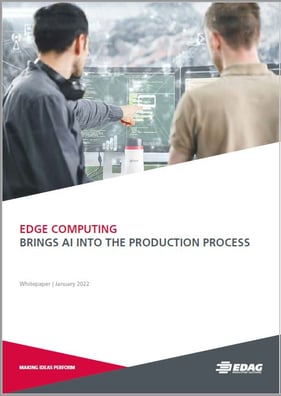Edge Computing Brings AI into the Production Process

The Internet of Things (IoT) is growing and growing: in modern buildings, cars, aircraft and trucks, machinery in industrial production, medical equipment in hospitals or on a wristband, retail outlets and farms: everywhere, sensors collect all kinds of data, consumption values are registered and images and videos are taken to automatically control systems, monitor their proper functioning, or provide a basis for decision making.
In order to meet the growing demands for more intelligence, more flexibility and more autonomy, the corresponding computing power is needed to consolidate and analyse the incoming data volumes. Especially in use cases with high real time relevance, the traditional server locations, for instance the central corporate data centre, a colocation data centre or even the cloud - i.e. a server farm that might be located far away - are not suitable. The solution is edge computing, i.e. a high performance IT infrastructure at the "edge" of the company. This means that it is located closer to the point of origin of the data than the central data centre. This is generally understood to mean decentralised data processing in the periphery of the network.
One possible application for edge computing is predictive maintenance. With the assistance of artificial intelligence (AI), irregularities in the production line can be proactively detected, maintenance optimised and downtime minimised. By means of edge computing, the automation experts at EDAG have succeeded in substantially improving an automotive manufacturer's already highly optimised production environment, and increasing the overall equipment effectiveness (OEE) by 2 percent.
Find out from Mark Kramer, Head of Production IT (Smart Factory Solutions) at EDAG Production Solutions what special demands edge computing places on the IT infrastructure, and how EDAG, in cooperation with technology partners solves these. Register now and download our white paper "Edge Computing Brings AI into the Production Process".
